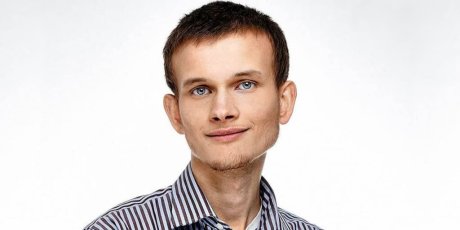Ten years. Two countries. Multiple redesigns. Some US $80 million invested. And, finally, Zero Zero Robotics has a product it says is ready for consumers, not just robotics hobbyists—the HoverAir X1. The company has sold several hundred thousand flying cameras since the HoverAir X1 started shipping last year. It hasn’t gotten the millions of units into consumer hands—or flying above them—that its founders would like to see, but it’s a start.
“It’s been like a 10-year-long Ph.D. project,” says Zero Zero founder and CEO Meng Qiu Wang. “The thesis topic hasn’t changed. In 2014 I looked at my cell phone and thought that if I could throw away the parts I don’t need—like the screen—and add some sensors, I could build a tiny robot.”
I first spoke to Wang in early 2016, when Zero Zero came out of stealth with its version of a flying camera—at $600. Wang had been working on the project for two years. He started the project in Silicon Valley, where he and cofounder Tony Zhang were finishing up Ph.D.s in computer science at Stanford University. Then the two decamped for China, where development costs are far less.
Flying cameras were a hot topic at the time; startup Lily Robotics demonstrated a $500 flying camera in mid-2015 (and was later charged with fraud for faking its demo video), and in March of 2016 drone-maker DJI introduced a drone with autonomous flying and tracking capabilities that turned it into much the same type of flying camera that Wang envisioned, albeit at the high price of $1400.
Wang aimed to make his flying camera cheaper and easier to use than these competitors by relying on image processing for navigation—no altimeter, no GPS. In this approach, which has changed little since the first design, one camera looks at the ground and algorithms follow the camera’s motion to navigate. Another camera looks out ahead, using facial and body recognition to track a single subject.
The current version, at $349, does what Wang had envisioned, which is, he told me, “to turn the camera into a cameraman.” But, he points out, the hardware and software, and particularly the user interface, changed a lot. The size and weight have been cut in half; it’s just 125 grams. This version uses a different and more powerful chipset, and the controls are on board; while you can select modes from a smart phone app, you don’t have to.
I can verify that it is cute (about the size of a paperback book), lightweight, and extremely easy to use. I’ve never flown a standard drone without help or crashing but had no problem sending the HoverAir up to follow me down the street and then land on my hand.
It isn’t perfect. It can’t fly over water—the movement of the water confuses the algorithms that judge speed through video images of the ground. And it only tracks people; though many would like it to track their pets, Wang says animals behave erratically, diving into bushes or other places the camera can’t follow. Since the autonomous navigation algorithms rely on the person being filmed to avoid objects and simply follows that path, such dives tend to cause the drone to crash.
Since we last spoke eight years ago, Wang has been through the highs and lows of the startup rollercoaster, turning to contract engineering for a while to keep his company alive. He’s become philosophical about much of the experience.
Here’s what he had to say.
We last spoke in 2016. Tell me how you’ve changed.
Meng Qiu Wang: When I got out of Stanford in 2014 and started the company with Tony [Zhang], I was eager and hungry and hasty and I thought I was ready. But retrospectively, I wasn’t ready to start a company. I was chasing fame and money, and excitement.
Now I’m 42, I have a daughter—everything seems more meaningful now. I’m not a Buddhist, but I have a lot of Zen in my philosophy now.
I was trying so hard to flip the page to see the next chapter of my life, but now I realize, there is no next chapter, flipping the page itself is life.
You were moving really fast in 2016 and 2017. What happened during that time?
Wang: After coming out of stealth, we ramped up from 60 to 140 people planning to take this product into mass production. We got a crazy amount of media attention—covered by 2,200 media outlets. We went to CES, and it seemed like we collected every trophy there was there.
And then Apple came to us, inviting us to retail at all the Apple stores. This was a big deal; I think we were the first third party robotic product to do live demos in Apple stores. We produced about 50,000 units, bringing in about $15 million in revenue in six months.
Then a giant company made us a generous offer and we took it. But it didn’t work out. It was a certainly lesson learned for us. I can’t say more about that, but at this point if I walk down the street and I see a box of pizza, I would not try to open it; there really is no free lunch.
This early version of the Hover flying camera generated a lot of initial excitement, but never fully took off.Zero Zero Robotics
How did you survive after that deal fell apart?
Wang: We went from 150 to about 50 people and turned to contract engineering. We worked with toy drone companies, with some industrial product companies. We built computer vision systems for larger drones. We did almost four years of contract work.
But you kept working on flying cameras and launched a Kickstarter campaign in 2018. What happened to that product?
Wang: It didn’t go well. The technology wasn’t really there. We filled some orders and refunded ones that we couldn’t fill because we couldn’t get the remote controller to work.
We really didn’t have enough resources to create a new product for a new product category, a flying camera, to educate the market.
So we decided to build a more conventional drone—our V-Coptr, a V-shaped bi-copter with only two propellers—to compete against DJI. We didn’t know how hard it would be. We worked on it for four years. Key engineers left out of total dismay, they lost faith, they lost hope.
We came so close to going bankrupt so many times—at least six times in 10 years I thought I wasn’t going to be able to make payroll for the next month, but each time I got super lucky with something random happening. I never missed paying one dime—not because of my abilities, just because of luck.
We still have a relatively healthy chunk of the team, though. And this summer my first ever software engineer is coming back. The people are the biggest wealth that we’ve collected over the years. The people who are still with us are not here for money or for success. We just realized along the way that we enjoy working with each other on impossible problems.
When we talked in 2016, you envisioned the flying camera as the first in a long line of personal robotics products. Is that still your goal?
Wang: In terms of short-term strategy, we are focusing 100 percent on the flying camera. I think about other things, but I’m not going to say I have an AI hardware company, though we do use AI. After 10 years I’ve given up on talking about that.
Do you still think there’s a big market for a flying camera?
Wang: I think flying cameras have the potential to become the second home robot [the first being the robotic vacuum] that can enter tens of millions of homes.





























